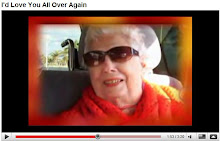Survival of Aging Network In Jeopardy
By Emily Bazar and April Dembosky, Special to The Sacramento Second of two parts
After a severe leg infection landed Bill Hollingworth in the hospital a few years ago, the Citrus Heights man was sent to a nursing home to recuperate for what he hoped would be a few weeks.
A few weeks turned into 13 months.
Hollingworth, who relies on a wheelchair to get around, figures he would have stayed there indefinitely if he didn't have access to In-Home Supportive Services, a publicly financed program that helps some low-
income elderly and disabled people receive care at home.
Now Hollingworth gets 236 hours of monthly paid care in his apartment from a worker who cleans, cooks, helps with bills, bathes him and assists with other life necessities. "I wouldn't be able to function without her," said Hollingworth, 63.
California was a pioneer in creating home- and community-based options to nursing homes more than 30 years ago with programs such as IHSS and Adult Day Health Care. In the past several years, however, state and local budget cuts and policy decisions have battered these and a range of other long-term care programs, resulting in reduced
services, slashed staff levels and in some cases, closed doors.
These cuts, and more likely to follow, could threaten a promising strategy for making affordable the health needs of the baby boomer population, which begins to hit 65 next month. Health policy experts agree that unless more of seniors' care can be shifted to less expensive care in their homes and community centers, and away from nursing homes and hospitals, the system may become unsustainable.
The outlook is bleak enough that some officials are exploring nongovernmental solutions, such as transferring some programs to nonprofits.
"It's not an overstatement to say the survival of the aging network is in jeopardy, pending what the state budget does, and then the cascading effect to county and city budgets after that," said Will Tift, planner for the Area 4 Agency on Aging, which serves Sacramento and six other counties.
Come February, all IHSS recipients will receive a 3.6 percent reduction in hours, a result of state budget cuts. Hollingworth will lose more than eight hours per month, which means that important but less critical tasks, such as range-of-motion exercises for his legs, won't get done.
"It seems like every time they're having a problem with the budget, who are the ones that suffer? The poor, the disabled and the elderly," he said.
State's home care legacy
In-Home Supportive Services is for low-income people who are older than 65, disabled or blind and need help with the activities of daily living such as grooming, dressing and cooking.
California's program, the largest in the country, has grown significantly. In the 2005-06 fiscal year, there were 352,026 average monthly recipients, compared with 428,962 in 2009-10, according to the state Department of Social Services.
Counties administer the program, and their social workers determine eligibility and hours for each recipient, with a maximum of 283.
Stanislaus County serves about 6,200 recipients and pays in-home workers $9.38 an hour.
This year, Stanislaus County reduced the IHSS budget to $44.4 million, down from $58.3 million last year. The county is responsible for $2 million in funding, the bulk of which comes from federal and state revenue.
Stanislaus County is seeking a pay cut from in-home care workers because money isn't available to fund the program through June 30. If enrollment trends continue, the program will need an additional $1.3 million from the county next year and $12.2 million from the federal and state governments.
Day centers slashed
Adult day health centers are another pillar of government's push to keep seniors out of institutions.
Centers such as Miller's Place on McHenry Avenue in Modesto are where frail older adults with physical or cognitive limitations can spend the day, in part to help give caregivers and families a break.
The Modesto center operated by the Doctors Medical Center Foundation gives clients a place to enjoy social activities, music, art, crafts and games, as well as physical and occupational therapy. There is a special program for Alzheimer's patients.
A Nov. 29 fire caused smoke damage to the building and the program closed for three weeks. But the center is serving clients again.
In part over budget concerns, the state enacted a moratorium in 2004 that prevents new Adult Day Health Centers from participating in the Medi-Cal program, with limited exceptions.
There were 365 centers when the moratorium went into effect, and now there are 312, according to the state Department of Aging. Enrollment also has declined.
Some centers closed because they're expensive to run and others were closed by the state for quality reasons, said Lydia Missaelides, executive director of the California Association for Adult Day Services. Providers haven't opened new ones because of high start-up costs and fears they won't be financially sustainable without Medi-Cal reimbursements, she said.
Budget cuts, such as the recent elimination of state funding for the Alzheimer's Day Care Resource Center program, also have strained Adult Day Health Care. The Alz-
heimer's program has provided specialized care for Alzheimer's and dementia patients through some ADHC centers.
"It makes no sense," said Thomas Truax, chief executive officer of the DMC Foundation in Modesto, speaking earlier this year. He noted that nursing home care costs the state about $250 per day, but care at an adult day health center costs $77 per day.
The foundation has recruited volunteers to Miller's Place at a time when state budget cuts could mean less money for the care of older adults. The organization opened a thrift store last year, hoping that proceeds from sales would help sustain the program.
Violeta Gonzalez, 80, started attending the Carmichael ADHC center three times a week after her husband died this year. For Gonzalez, who is mentally sharp and physically strong, the center allows her to get out of her house and socialize.
The center's bus picks her up at her door in the morning and drops her off in the afternoon. "It gives me something to do. I don't have to bother anybody to take me here or take me there," said Gonzalez.
The thought of a nursing home or assisted-living facility makes her shudder. "From here," she said of her home, "I'm going to the grave."
Assisted-living oversight
As publicly funded programs shrink, there's been a boom in private-pay assisted living facilities.
The residential care industry that caters to middle-class Californians who will pay out of pocket has steadily grown in the past decade, with 7,822 of them now in California, up more than 25 percent.
But these facilities increasingly are taking on customers with significant health needs, raising questions about whether more oversight is needed. Residential care sites are not medical facilities. The vast majority are small homes, with 15 beds or fewer, where residents can get help with daily tasks such as dressing, eating or managing medications. Costs can range from $2,000 to $6,000 a month or more.
However, as the aging population lives longer with more chronic conditions, the residents of assisted-living facilities have gotten sicker than originally intended. For example, more have dementia.
"These are not the assisted-living facilities of 15 years ago. Across the country you see facilities admitting and retaining people with higher health care needs," said Eric Carlson, directing attorney with the National Senior Citizens Law Center in Los Angeles.
Carlson said the state needs to demand higher standards for health care. He recommends that California follow the lead of some other states, which have adopted tiered licensing standards that take into account the changing nature of long-term care.
Just as more facilities open, budget cuts to the Department of Social Services and attorney general's office have reduced oversight.
"There are fewer investigators, fewer ombudsmen and fewer people in the licensing agencies," said Jody Feldman, deputy attorney general at the Bureau of Medi-Cal Fraud and Elder Abuse.
Patient-safety advocates say there are many potential weaknesses in state law: Facilities are inspected once every five years, facility operators need attend only a 40-hour certification program, and staff members need just 10 hours of training.
Even discerning family members don't always catch problems at assisted-living facilities.
When Kim Kuviora, 50, of Folsom couldn't take care of her dad at home anymore, she found an assisted-living facility in Orangevale.
"It was just like an Embassy Suites. It was so beautiful," she said. "And they sold me that, hook, line and sinker."
But there were problems with the health care Kuviora's dad received, so bad that she moved him out and filed a lawsuit against the facility. They settled, so Kuviora can't discuss the details.
"All I can say is, with every single facility I ever dealt with, it seems like all facilities can't seem to get medications handled correctly or dispensed correctly," she said.
Kuviora said she and her husband talk all the time about how to prepare for their potential long-term care needs, especially because they don't have children to care for them.
"We are savers, big savers," she said. "But I don't think even at this point that we saved enough to be able to afford what long-term care is going to cost by the time we need it. I don't think we'll be close."
Source=>>here
















No comments:
Post a Comment